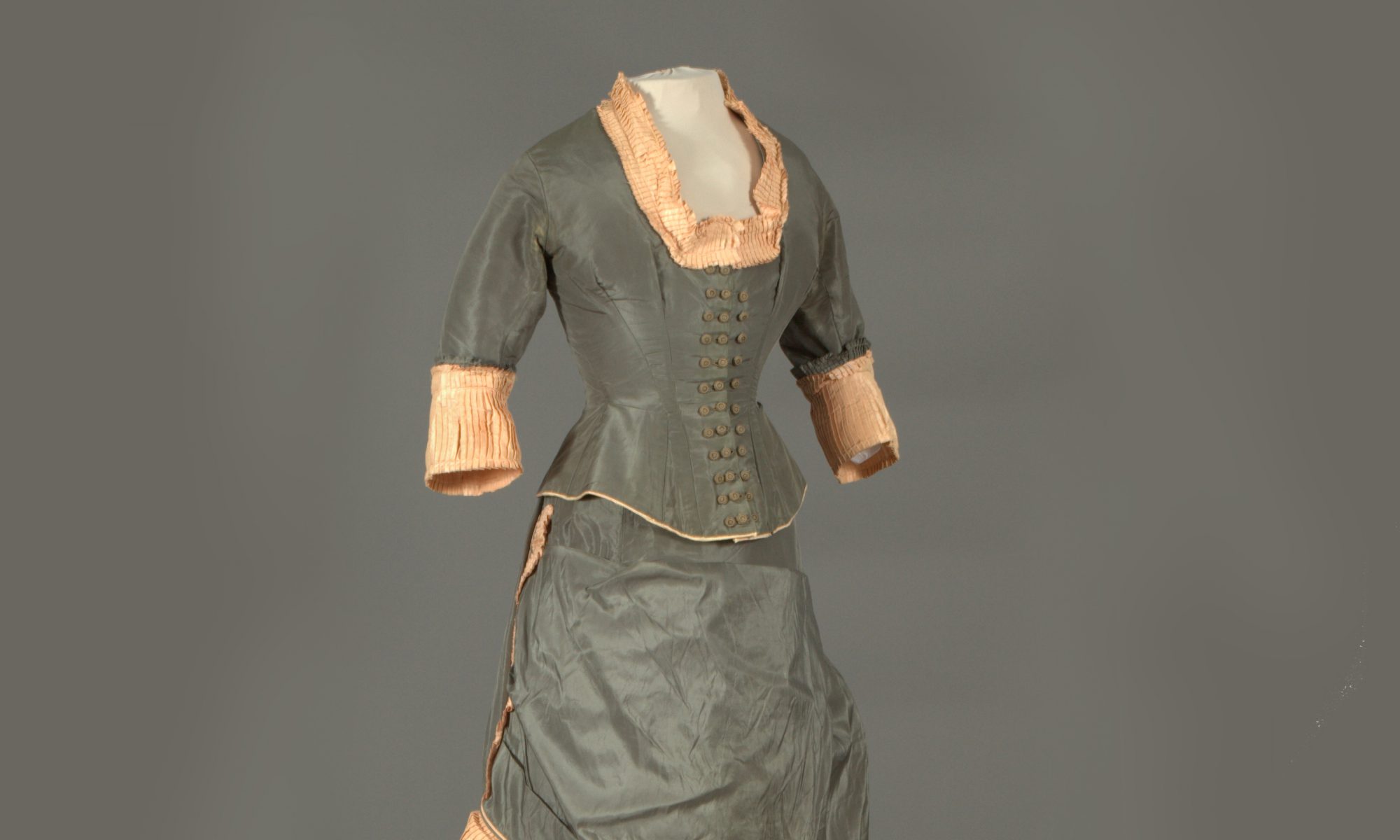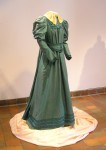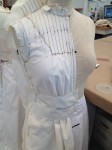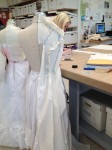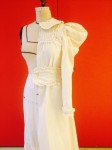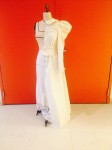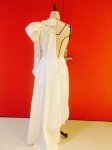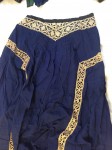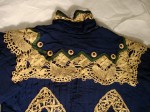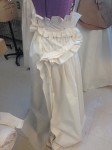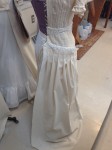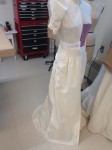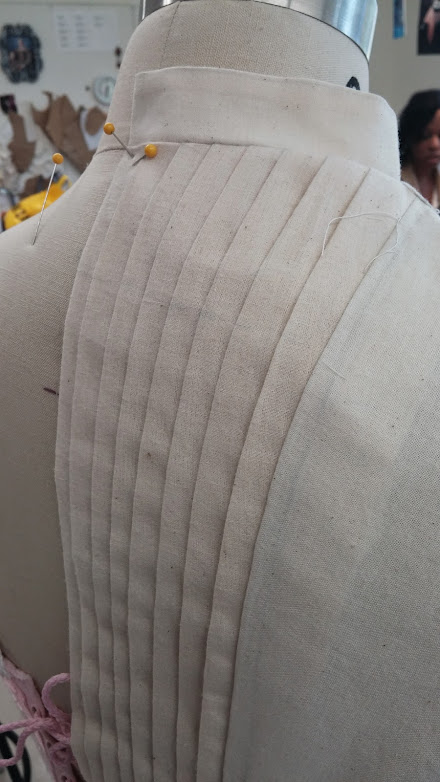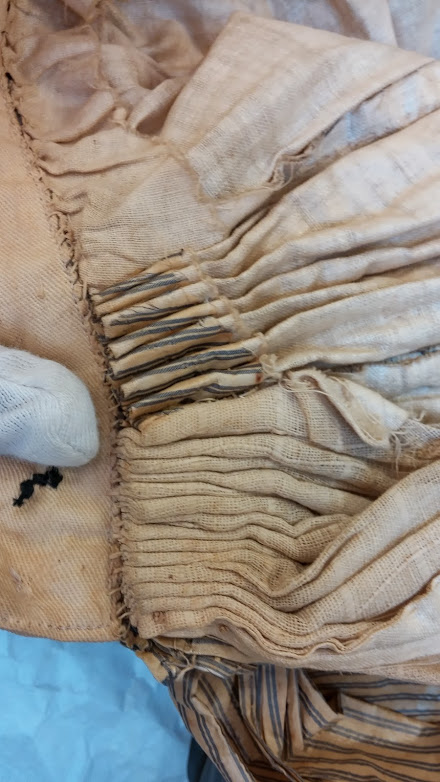This post is the third in a series with students’ reflections on their class projects to make patterns for reproductions of historic clothing.
This semester, Professor Kenisha Kelly’s advanced draping class was assigned a challenge: observe one dress from the Historic Vassar College Costume Collection and recreate it in muslin. We were also tasked with designing a small fashion collection combining the historic qualities and styles of our dress with modern fabric manipulations that we had recently done. We had two hours one day in which to take photos, record measurements, and formulate a plan for how we were going to take this image that was created over one hundred years ago and turn our squares of muslin into a spitting image.
Each student was assigned a specific dress from a particular time period; mine was a casual teal day dress from the 1890’s (you can see it in the online database at http://vcomeka.com/vccc/items/show/1146, and you can see a 3D rotating view of it at http://vcomeka.com/vccc/VR/2004.031/2004.031.htm). The 1890’s were defined by intricate bodices and much smaller and simpler skirts than previously seen. Petticoats became smaller, however corsets were still in fashion, as well as tall collars and cinched waists. For my fashion line, I tapped into the steampunk style, a futuristic imaginative concept that puts Victorian era clothes in an advanced technical age. This allowed me to modernize the Victorian style and play around with cuts and colors, while maintaining the basic structure of 1890’s clothing concepts.
When it got down to draping our pieces, we found that each dress had its own details and difficulties. Some elements that defined my dress were tucks across the center front and back, incredibly full two-piece sleeves, and a Watteau back. Also notable, compared to my classmates, was that I didn’t drape over a corset as it was presumed that mine was a wrapper, and thus would likely only have been worn inside the home.
After we had collected our research, both in person on the individual dress and online on the general styles and trends of the era, we were given just a little over two weeks to drape bodices, skirts, collars, belts, peplums, sleeves, cuffs, and more depending on the dress. Using what we had learned about fabric manipulation in the class up to that point in the semester, we created tucks, pleats, gathers, smocking, etc. I began with my bodice and skirt and the manipulations that were included in those pieces, followed by the sleeve, collar, belt, and finally, the finishing touch, gathered trim around the wrists, collar, belt, and tucks at center front and back.
In those two weeks, we all ran into a number of road stops where we needed to rethink our original plan and rework the fabric again and again. One of the challenges that arose for me personally was that the bodice and the skirt were one piece with no seam, so I needed to drape them together, creating some very oversized pattern pieces and awkward off-grain seam lines where the skirt became fuller. Another personal difficulty was in the sleeves, which were both gathered, tucked, and matched up differently than I am used to, due to the way the shoulder seams are set very far back. Both of these took a few tries with both fabric and paper patterns; however, it resulted in a dress that, although perhaps not identical, was incredibly reminiscent of the teal wrapper and evoked the characteristics of the 1890’s.
